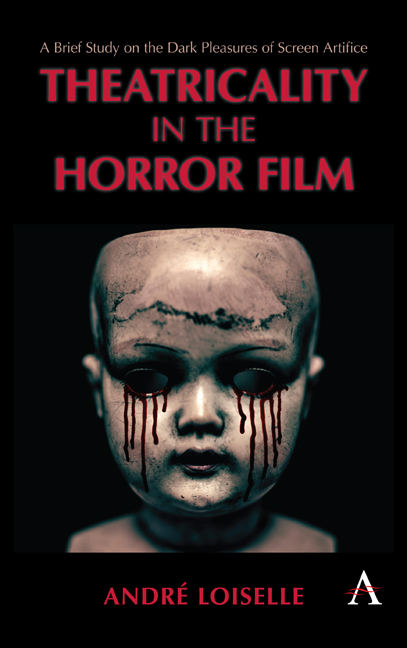Book contents
- Frontmatter
- Contents
- List of Illustrations
- 1 Introduction: Of Monsters and Monstration
- 2 Horror, Realism and Theatricality
- 3 The Theatricality of Monstrous Villainy in Film Adaptations of Horror Plays
- 4 The Theater as Locus Horribilis: Staging the Paradox of Tragic Horror
- 5 The Theatricality of Horror: Characters, Unities and Styles
- 6 Conclusion: The Theatricality of Horror Spectatorship
- Bibliography
- Index
4 - The Theater as Locus Horribilis: Staging the Paradox of Tragic Horror
Published online by Cambridge University Press: 16 November 2019
- Frontmatter
- Contents
- List of Illustrations
- 1 Introduction: Of Monsters and Monstration
- 2 Horror, Realism and Theatricality
- 3 The Theatricality of Monstrous Villainy in Film Adaptations of Horror Plays
- 4 The Theater as Locus Horribilis: Staging the Paradox of Tragic Horror
- 5 The Theatricality of Horror: Characters, Unities and Styles
- 6 Conclusion: The Theatricality of Horror Spectatorship
- Bibliography
- Index
Summary
A number of horror movies are set in theaters and emphasize the artifice of stage performance as both reflexive and constitutive of cinematic terror. As I have discussed at length elsewhere (Loiselle 2012), many of these films use the theater not only as a space where gory spectacles can be staged but also as a physical and conceptual framework within which “real” horror transpires. This chapter will argue that, through this intersection of theatrical and cinematic terror, these films illustrate how screen horror replicates the paradox of ancient Greek tragedy: a Dionysian spectacle of bestial lust and brutal violence contained within a rigid Apollonian image of controlled civility and stable normality (Price 1998). At an even more primeval level, this paradox opposes the crude materiality of animal sacrifice to the transcendental function of rituals aimed at “communicating with ghosts and gods” (Pizzato 2005, 17). The purpose of this paradoxical tension is to achieve a sort of catharsis, where the spectator can enjoy the threatening pleasures of gory excess and devastation, while transcending the fears associated with such petrifying overindulgence through the aestheticism of artistic or religious experience. This catharsis reaffirms “the mind's ability to envisage everything that threatens the self, to attain a kind of mastery in the process and— what is more— to delight in that mastery” (Foster 2017, 79). This paradox thus allows the audience to relish in spectacular carnage while remaining within the safe space of a meaningful formal practice. The theatricality of horror cinema emerges from this same paradox, which is made manifest in those films that use the theater as the ideal setting to showcase terrifying beauty.
In his 1827 satirical essay “On Murder, considered as one of the Fine Arts,” Thomas De Quincey sardonically praises the terrifying beauty of murder by linking the bloody deed to the cathartic outcome of tragedy. “The final purpose of murder,” writes De Quincey, “considered as a fine art, is precisely the same as that of tragedy, in Aristotle's account of it, viz., ‘to cleanse the heart by means of pity and terror’ “ (De Quincy 1889, 59). Juan Carlos Medina's 2016 Neo- Victorian Gothic thriller The Limehouse Golem revolves around De Quincey'sargument that murder, when ascertained according to “the principles of taste” rather than morality, can be seen as “a very meritorious performance” (13).
- Type
- Chapter
- Information
- Theatricality in the Horror FilmA Brief Study on the Dark Pleasures of Screen Artifice, pp. 49 - 72Publisher: Anthem PressPrint publication year: 2019



